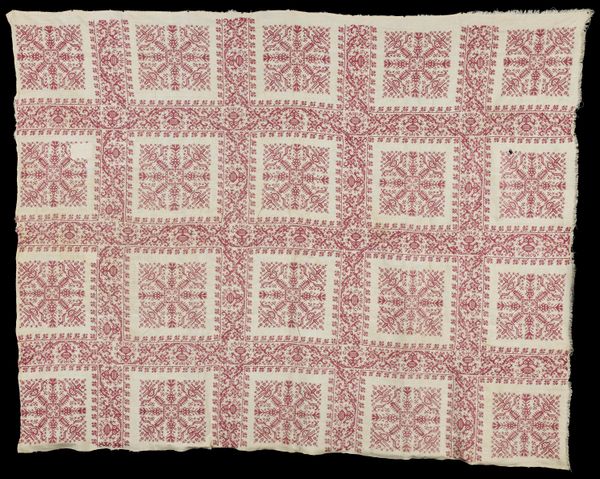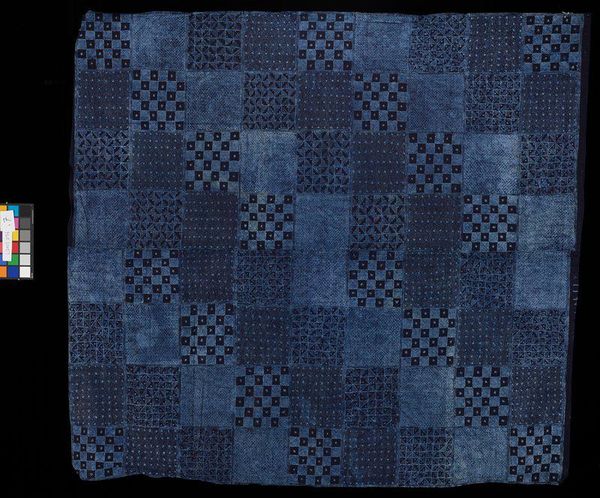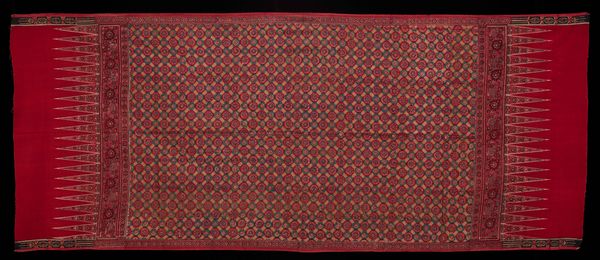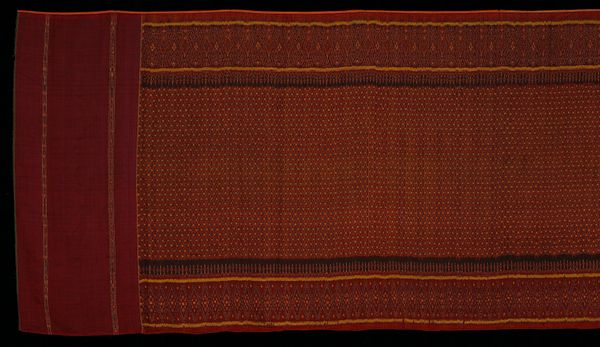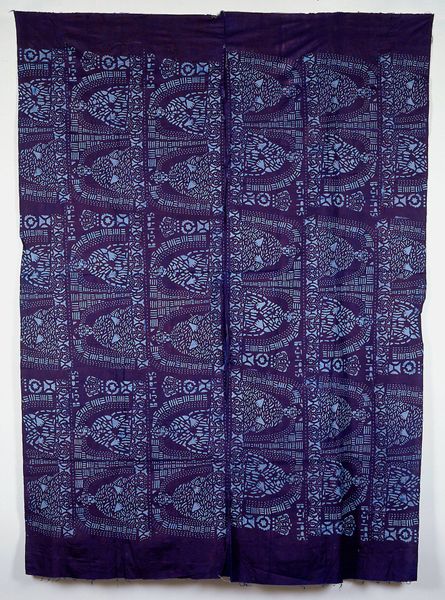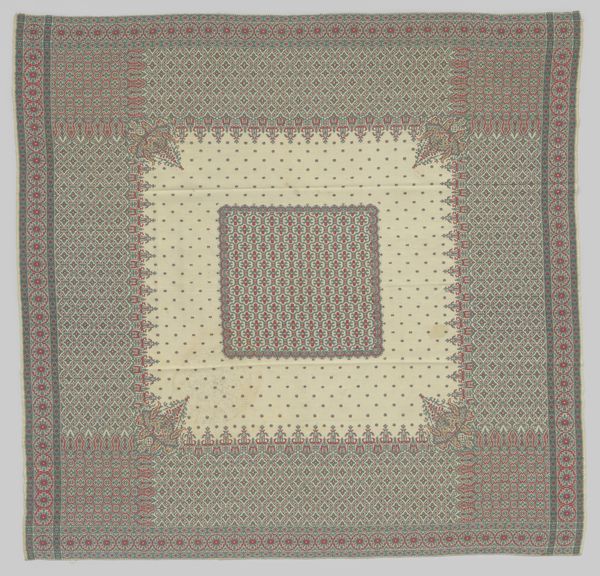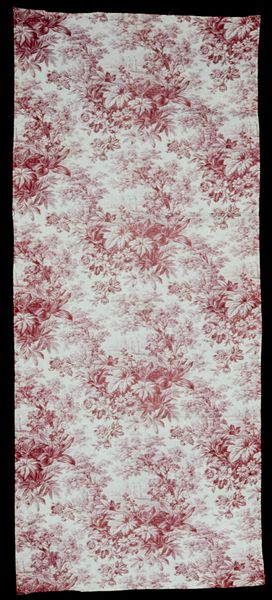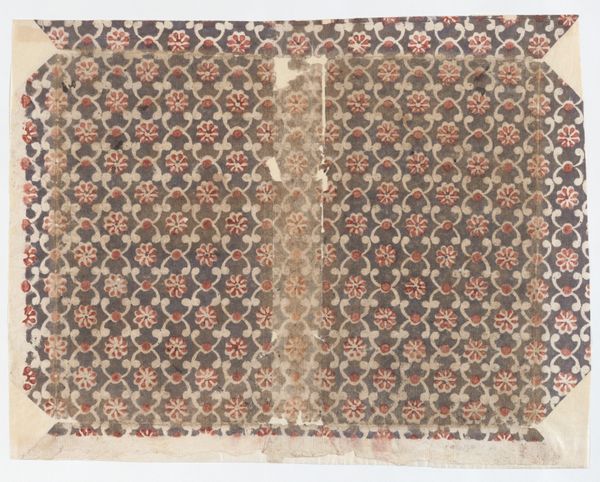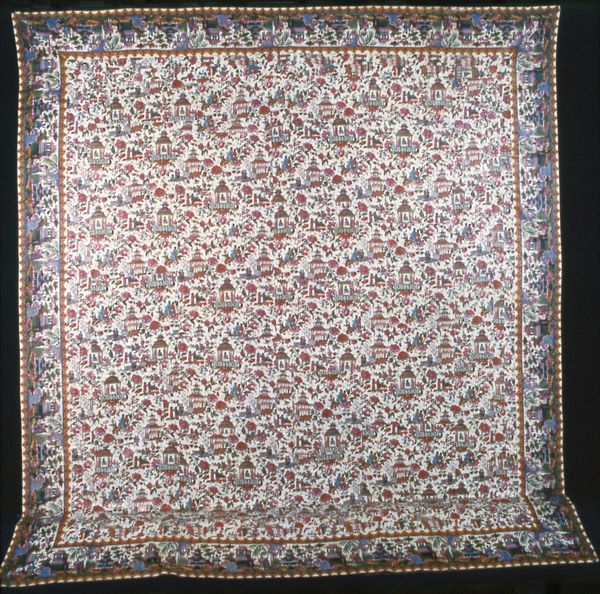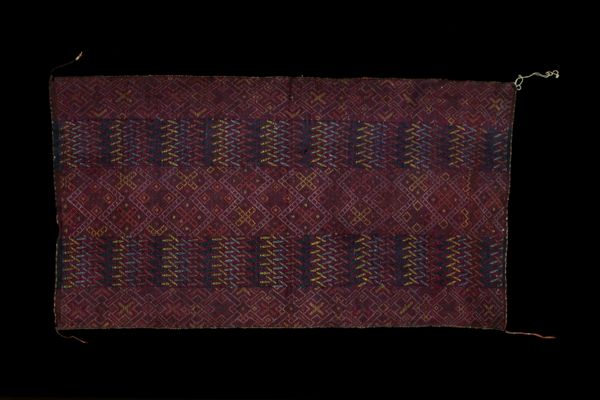
silk, weaving, textile
#
silk
#
weaving
#
textile
#
geometric pattern
#
geometric
#
textile design
#
decorative-art
Dimensions: 136 1/2 x 66 1/2 in. (346.71 x 168.9 cm)
Copyright: Public Domain
Editor: Here we have a woven silk shawl, probably from the 19th century and of unknown origin. I find its geometric pattern quite striking, but the color palette seems subdued. What visual narratives do you perceive in this textile work? Curator: Immediately, I am drawn to the visual language employed – the repeating paisley motifs. The paisley, of course, isn't simply a decorative element. It originates in Persia, where it represented life and fertility, making its way through the Silk Road and eventually into European textiles. Do you see how its symbolic weight shifted and transformed across cultures and time? Editor: That’s fascinating! I hadn't considered the movement of that symbol across such a vast geographical area. But within this shawl, does that symbol still communicate ideas of fertility? Curator: Perhaps not directly, but I wonder, if we consider the act of wearing a shawl—as a symbol of protection, warmth, even status—can we imagine the paisley as hinting at ideas of security and well-being? How does that resonate, knowing the symbol's historical meaning? Editor: So, the arrangement of the paisley within the grid, juxtaposed with those floral elements – it creates this interplay between tradition and adaptation, doesn't it? Almost like the pattern is encoding cultural memory! Curator: Precisely! It also showcases the capacity of design not only to be aesthetically pleasing, but also to silently carry meaning across generations, adapted, renewed, and subtly, changed. Editor: I had initially thought it was just a pretty pattern, but it seems there’s much more layered in those repeated shapes. Thanks! Curator: It's the beauty of art – that symbols continue their silent work, weaving tapestries of connection, even without us fully grasping their origins.
Comments
No comments
Be the first to comment and join the conversation on the ultimate creative platform.
